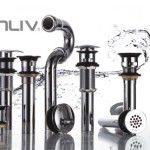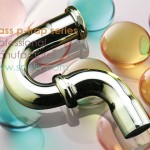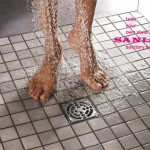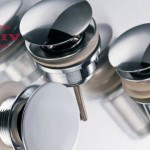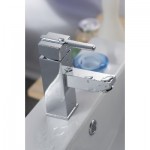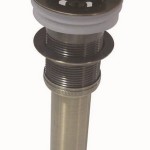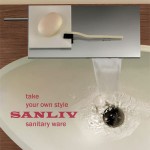Chrome washbasin drain P-Trap or bthroom sink P-Trap is a brass Plumbing P-Trap which connect between pop-up drain and wall plumbing pipes. Almost any household equipment that drains water has a p-trap. Sinks, bathtubs, washing machines, all have p-traps to drain the waste water. A p-trap is comprised of a tailpiece, the curved trap piece, and a drain elbow. The drain elbow for a p-trap fits into the drain pipe which goes directly into the wall.

Sanliv Bathroom Sink or Wash Basin P-Trap, Item No. A1001
- Chrome plated brass
- DIN EN 274
- G1-1/4″ x 32 mm, standard model with outlet bend 32 x 200 mm with wall flange (escutcheon).
- Contact: Mr. Walid Imam, Saudi Arabia. Tel: 00966-50-6317-143. or E-mail:


Sanliv Bathroom Sink or Wash Basin P-Trap 1 1/4 inch, chrome plated brass, rosette chrome plated diameter 65 mm, for wash basin, with outlet bend 32 mm x 200 mm, in acc. to DIN EN 19 545 / DIN EN 274, adjustable drain pipe up to 20 – 70 mm, for wall connection ≤ 250 mm.
Almost any household equipment that drains water has a p-trap. Sinks, bathtubs, washing machines, all have p-traps to drain the waste water. A p-trap is comprised of a tailpiece, the curved trap piece, and a drain elbow. The drain elbow for a p-trap fits into the drain pipe which goes directly into the wall.
Codes require a p-trap (or an s-trap) any place there is an open drain line that flows into the drain-waste-vent system. As the name implies, the drain-waste-vent system removes solid, liquid or gas waste from the home through drains and vents. For example, as the water empties from a sink, it goes through the p-trap, on to the drain line, and ends up in the sewage system.
The important thing about the p-trap is that it is has a water seal along the curve of the trap. The seal prevents noxious air or gases to backflow from the sewer line, but the original waste can still exit into the sewage system. If the gases were allowed back into the home, not only would they smell, but they could cause illnesses and have even been known to explode.
A p-trap can be made of metal or of plastic. Although metal is usually considered to be more durable, the reality is that the plastic will last longer. Although the metal traps may look nicer, they quickly corrode. One squeeze at the bend, even with fingers, and if it gives in – even slightly – it needs to be replaced. There is one exception to this rule: heavy-gauge brass traps will last a very long time.
Depending on where the trap is located, it may vary in size. Bathroom traps are 1.25 inches (3.2 cm) in diameter. Kitchen traps are 1.5 inches (3.8 cm) in diameter.
Every time the drain is used, water is flushed through the trap and fresh water replaces the old water. Solids will begin to stick to the trap over the course of time; consequently, clogs will occur. In those cases, it is probably time to replace the trap. A beginner can replace the p-trap in about an hour; however, an expert can do the same job in about twenty minutes. In some cases, a trap that has a cleanout plug can be cleaned out without removing and installing a new trap – simply rinse the water through the plug and remove the debris with an auger or other tool.
It is important to know the specific plumbing codes for a particular country before removing or installing a new p-trap. For example, in the United States, white plastic PVC, polyvinyl-chloride, pipe is commonly used for drains. But, in Canada, black ABS, acrylonitrile butadiene styrene, is used. Every country is different, so the proper research is necessary before delving into any plumbing project.


